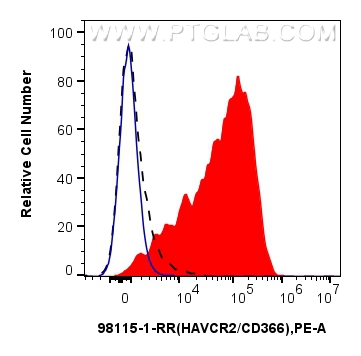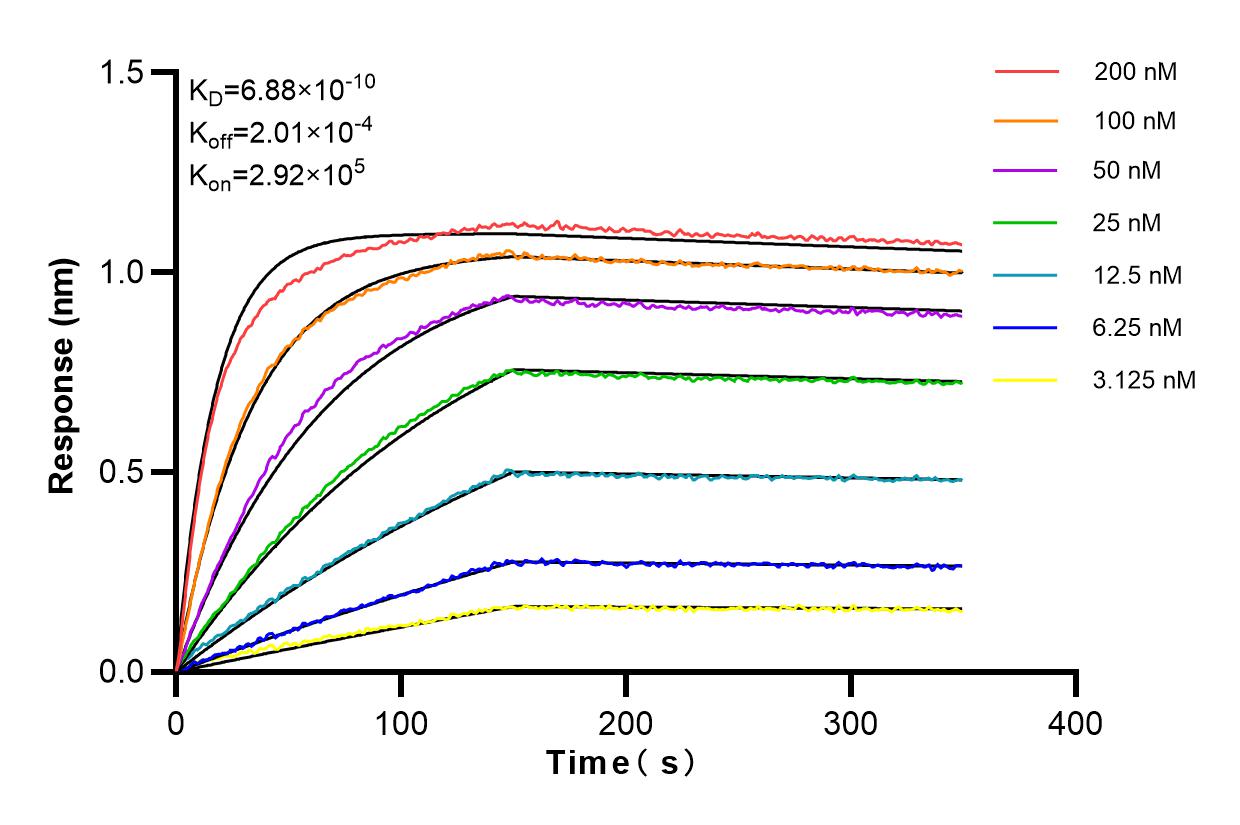验证数据展示
经过测试的应用
| Positive FC detected in | Anti-CD3/CD28 treated human PBMCs |
推荐稀释比
| 应用 | 推荐稀释比 |
|---|---|
| This reagent has been tested for flow cytometric analysis. It is recommended that this reagent should be titrated in each testing system to obtain optimal results. | |
| Sample-dependent, Check data in validation data gallery. | |
产品信息
98115-1-RR targets TIM3 in FC applications and shows reactivity with human samples.
| 经测试应用 | FC Application Description |
| 经测试反应性 | human |
| 免疫原 | Recombinant Protein 种属同源性预测 |
| 宿主/亚型 | Rabbit / IgG |
| 抗体类别 | Recombinant |
| 产品类型 | Antibody |
| 全称 | hepatitis A virus cellular receptor 2 |
| 别名 | T-cell immunoglobulin mucin receptor 3, T-cell immunoglobulin and mucin domain-containing protein 3, HAVcr-2, HAVCR2, CD366 |
| 计算分子量 | 301 aa, 33 kDa |
| GenBank蛋白编号 | BC020843 |
| 基因名称 | TIM3 |
| Gene ID (NCBI) | 84868 |
| RRID | AB_3672262 |
| 偶联类型 | Unconjugated |
| 形式 | Liquid |
| 纯化方式 | Protein A purfication |
| UNIPROT ID | Q8TDQ0 |
| 储存缓冲液 | PBS with 0.09% sodium azide , pH 7.3 |
| 储存条件 | Store at 2 - 8°C. Stable for one year after shipment. |
背景介绍
TIM3, also known as HAVCR2, is a member of the recently discovered T cell Ig and mucin domain-containing molecule superfamily. TIM3 is a negative regulatory molecule that is important for T cell tolerance and has a crucial role in autoimmunity and T cell exhaustion during chronic viral infection (PMID: 23180819). TIM3 is expressed by T-helper type 1 (Th1) cells, macrophage, monocyte, dendritic cells, CD8+ T cell and other lymphocyte subsets. Galectin-9 is a ligand for TIM3. TIM3-galectin-9 pathway negatively regulates T helper type 1 immunity (PMID: 16286920).
实验方案
| Product Specific Protocols | |
|---|---|
| FC protocol for TIM3 antibody 98115-1-RR | Download protocol |
| Standard Protocols | |
|---|---|
| Click here to view our Standard Protocols |


